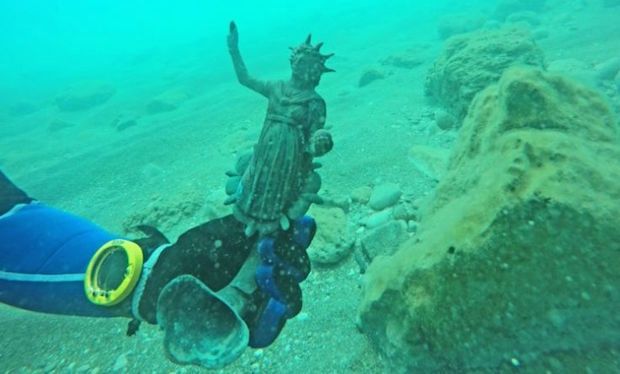Advertisement
1600 Year-Old Shipwreck Yields Rare Treasures
| By Brian Delpozo
Advertisement - Continue reading below

A pair of recreational divers recently discovered an astounding archeological find off the coast of Israel.
According to the Israel Antiques Authority the pair of divers were exploring in the Caesarea National Park near the Hafi when they discovered a shipwreck. They immediately called in the IAA, who dated the ship as being from the Late Roman period, roughly 1,600 years ago.
The wreck, most likely a merchant ship, contained a range of objects including coins and other bronze artifacts. The ship also had intact bronze statues of the Roman god Sol and Luna, a rare find since bronze statues were often melted and recast.

Jacob Sharvit and Dror Planer, the director and deputy director of the Marine Archaeology Unit of the Israel Antiquities Authority respectively, theorized on how the ship ended up at the bottom of the sea:
“These are extremely exciting finds, which apart from their extraordinary beauty, are of historical significance. The location and distribution of the ancient finds on the seabed indicate that a large merchant ship was carrying a cargo of metal slated recycling, which apparently encountered a storm at the entrance to the harbor and drifted until it smashed into the seawall and the rocks.”
Sharvit and Planer went on to describe the rarity and importance of the find saying:
“A marine assemblage such as this has not been found in Israel in the past thirty years. Metal statues are rare archaeological finds because they were always melted down and recycled in antiquity. When we find bronze artifacts it usually occurs at sea. Because these statues were wrecked together with the ship, they sank in the water and were thus ‘saved’ from the recycling process… In the many marine excavations that have been carried out in Caesarea only very small number of bronze statues have been found, whereas in the current cargo a wealth of spectacular statues were found that were in the city and were removed from it by way of sea. The sand protected the statues; consequently they are in an amazing state of preservation – as though they were cast yesterday rather than 1,600 years ago.”
Advertisement - Continue reading below
Share
On Facebook
